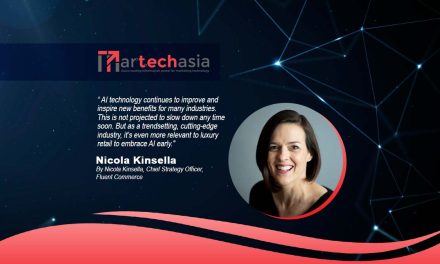BEIJING, June 22, 2023 /PRNewswire/ — WiMi Hologram Cloud Inc. (NASDAQ: WIMI) (“WiMi” or the “Company”), a leading global Hologram Augmented Reality (“AR”) Technology provider, today announced the development of the 3D CGH technology based on deep learning. Deep learning can train neural networks, thus enabling automated object recognition and 3D modeling. It also allows the optimization of light field information, thereby improving the quality and resolution of holograms. WiMi uses deep learning algorithms to analyze 3D models to extract depth information and then undergoes a series of optical processing to turn the depth map into a hologram.
This technology covers data preparation, model construction, deep learning model training, hologram generation, and presentation.
- Data Preparation
To generate holograms, we need to prepare the data of 3D objects first. Usually, the data of 3D objects can be obtained by using 3D scanners or manual modeling. In this process, it is necessary to pay attention to the precision and resolution of the data. The higher the accuracy of the data, the more precise the hologram will be, and the higher the resolution, the more details can be presented.
- Model construction
After preparing the data of the 3D object, the model needs to be constructed next. Model construction is the crucial step in converting 3D objects into holograms. In this process, 3D modeling software needs to be used. During the model-building process, attention must be paid to the model geometry and texture mapping details. These factors will affect the quality and effect of the final generated hologram.
- Deep learning model training
After preparing the data of 3D objects and constructing the model, the next step is to train the deep learning model. Deep learning models are the essential technique to convert 3D models into holograms. In this process, Convolutional Neural Network (CNN) can be used. During the model training process, a large amount of data needs to be used to improve the model’s accuracy and stability.
- Hologram generation
After the deep learning model is trained, the next step is to generate holograms. In this process, the 3D model needs to be input into the deep learning model, and then the output result is rendered into a hologram. During the hologram generation process, we need to pay attention to the light source settings and the hologram adjustment. These factors will affect the visual effect and fidelity of the final generated hologram.
- Hologram display
Finally, the generated hologram needs to be displayed. In the process of hologram display, a light source and specific projection equipment, such as a holographic projector, need to be used. During the display process, attention needs to be paid to the position of the light source and the intensity of the light, as well as the setting and calibration of the projection equipment. These factors will affect the viewing effect and clarity of the final generated hologram.
The 3D CGH technology based on deep learning has many application prospects, including virtual reality, augmented reality, medical imaging, and other fields. In virtual reality, holograms can present scenes and objects with 3D effects to give users a sense of real presence. In augmented reality, holograms can enhance things in realistic settings, allowing users to gain a deeper understanding of the 3D structure of objects. In medical imaging, holograms can present the 3D structure of medical images to help doctors better diagnose medical conditions.
About WIMI Hologram Cloud
WIMI Hologram Cloud, Inc. (NASDAQ:WIMI) is a holographic cloud comprehensive technical solution provider that focuses on professional areas including holographic AR automotive HUD software, 3D holographic pulse LiDAR, head-mounted light field holographic equipment, holographic semiconductor, holographic cloud software, holographic car navigation and others. Its services and holographic AR technologies include holographic AR automotive application, 3D holographic pulse LiDAR technology, holographic vision semiconductor technology, holographic software development, holographic AR advertising technology, holographic AR entertainment technology, holographic ARSDK payment, interactive holographic communication and other holographic AR technologies.
Safe Harbor Statements
This press release contains “forward-looking statements” within the Private Securities Litigation Reform Act of 1995. These forward-looking statements can be identified by terminology such as “will,” “expects,” “anticipates,” “future,” “intends,” “plans,” “believes,” “estimates,” and similar statements. Statements that are not historical facts, including statements about the Company’s beliefs and expectations, are forward-looking statements. Among other things, the business outlook and quotations from management in this press release and the Company’s strategic and operational plans contain forward−looking statements. The Company may also make written or oral forward−looking statements in its periodic reports to the US Securities and Exchange Commission (“SEC”) on Forms 20−F and 6−K, in its annual report to shareholders, in press releases, and other written materials, and in oral statements made by its officers, directors or employees to third parties. Forward-looking statements involve inherent risks and uncertainties. Several factors could cause actual results to differ materially from those contained in any forward−looking statement, including but not limited to the following: the Company’s goals and strategies; the Company’s future business development, financial condition, and results of operations; the expected growth of the AR holographic industry; and the Company’s expectations regarding demand for and market acceptance of its products and services.
Further information regarding these and other risks is included in the Company’s annual report on Form 20-F and the current report on Form 6-K and other documents filed with the SEC. All information provided in this press release is as of the date of this press release. The Company does not undertake any obligation to update any forward-looking statement except as required under applicable laws.
















